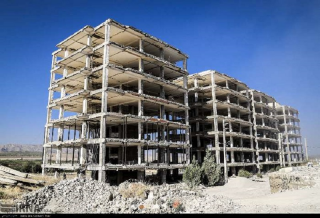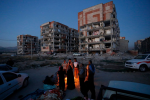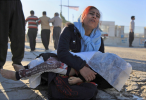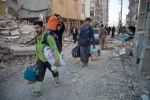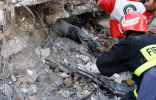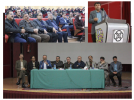This is the 14th case study from SUEUAA (Strengthening Urban Engagement in Universities in Asia and Africa), written by Nematollah Azizi of the University of Kurdistan and concerns the contribution of his university to relief and assistance provided to communities following a recent major earthquake. Iran is one of the most seismically active countries in the world, being crossed by several major faults that cover at least 90% of the country. The Iranian Plateau is subject to most types of tectonic activity, including active folding, faulting, and volcanic eruptions.
It is well known for its long history of disastrous earthquake activity. Not only have these earthquakes killed thousands, but they have also led to the waste of valuable natural resources. Since 1900, at least 126,000 fatalities have resulted from earthquakes in Iran.
On 12 November 2017 at 18:18 UTC (21:48 local time), an earthquake with a moment magnitude of 7.3 occurred on the Iran-Iraq border, with the Iraqi Kurdish city of Halabja, and the Kurdish dominated places of Ezgeleh, Salas-e Babajani County, Kermanshah Province in Iran, closest to the epicenter, 30 kilometers (19 miles) south of the city of Halabja, Iraqi Kurdistan. It was felt as far away as Israel and the United Arab Emirates.
With over 2000 people killed (mostly in the Iranian Kurdish dominated province of Kermanshah), and a large number of injured, as well as over 200,000 people who lost their houses, it was the deadliest earthquake of 2017. Additionally, on Nov 26, 2018 - more than 700 people were injured in a 6.3-magnitude earthquake that struck western Iran. The epicenter was the same areas in Kermanshah province, where last year were affected in the country's deadliest earthquake in over a decade. These earthquakes caused heavy damage to the city of Kermanshah in the vast areas of the city and villages of Kermanshah, including the cities of Sarpol Zahab, Salas Babajani, Dalaho, Qasr Shirin and Gilan West.
The Role and Contribution of University of Kurdistan
Initially and immediately after the first announcements of the severity of the earthquake, the University of Kurdistan appointed Dr. Jamil Bahrami (Head of the Civil Engineering Department) as the director of Kurdistan University's Relief and Science Team. Therefore, from the very first hours after the event, this team started to send different representative groups of experts to the region to observe and evaluate the location and focus of the earthquake and its extension along the fault. At the same time as the identification of the critical areas and the need for the assistance of various groups of aid workers, the university helped and distribute the necessary equipment. And installing a number of seismographs on the part of the Seismology Research Institute of about two hundred billion IRR
Relief and assistance provided following earthquakes by the UoK’s team, in collaboration with the Engineering Organization and the International Institute for Earthquake Research as well as some other universities, can be described by the following three stages:
- Emergency and short-term emergency assistance:
From the first day after the earthquake, providing variety of services started b team include reporting the needs of various damaged areas to relief groups, and the provision and delivery of essential and life-saving materials, as well as scientific findings, from faults and landslides, as well as the assessment of the status of vital arteries in first days and assistance in installing seismographs to complete and develop seismic network.
- Medium term measures:
In addition to continuing basic assistance and providing logistic support regarding people daily needs, providing and the delivery of tents, drains and heating appliances were taken into account. In this regards creating mental health camps in which the university is committed to provide psychological services on a regular bases.
- Long-term plans, measures and actions:
In order rebuild earthquake-affected areas several long-term measures were taken into account for permanently reset people those areas. These efforts include the formation of camps, teams and reconstruction and empowerment committees, raising money and linking with other donors in this regard, suggesting technical assistance and providing various and new housing patterns especially in the rural housing sector, planning for construction in areas and arranging frequent visits with people by donors, trustees and councils of the city and village as well as officials and parliamentarians.
It is worthy to mention that SUEUAA insights on the university’s third mission and besides academic professional activity and being socially responsible, the humanitarian responsibility of the Universities of Kurdistan has also been improved. The university’s initiatives and efforts to help people who suffered from an earthquake can be justified respectively.

